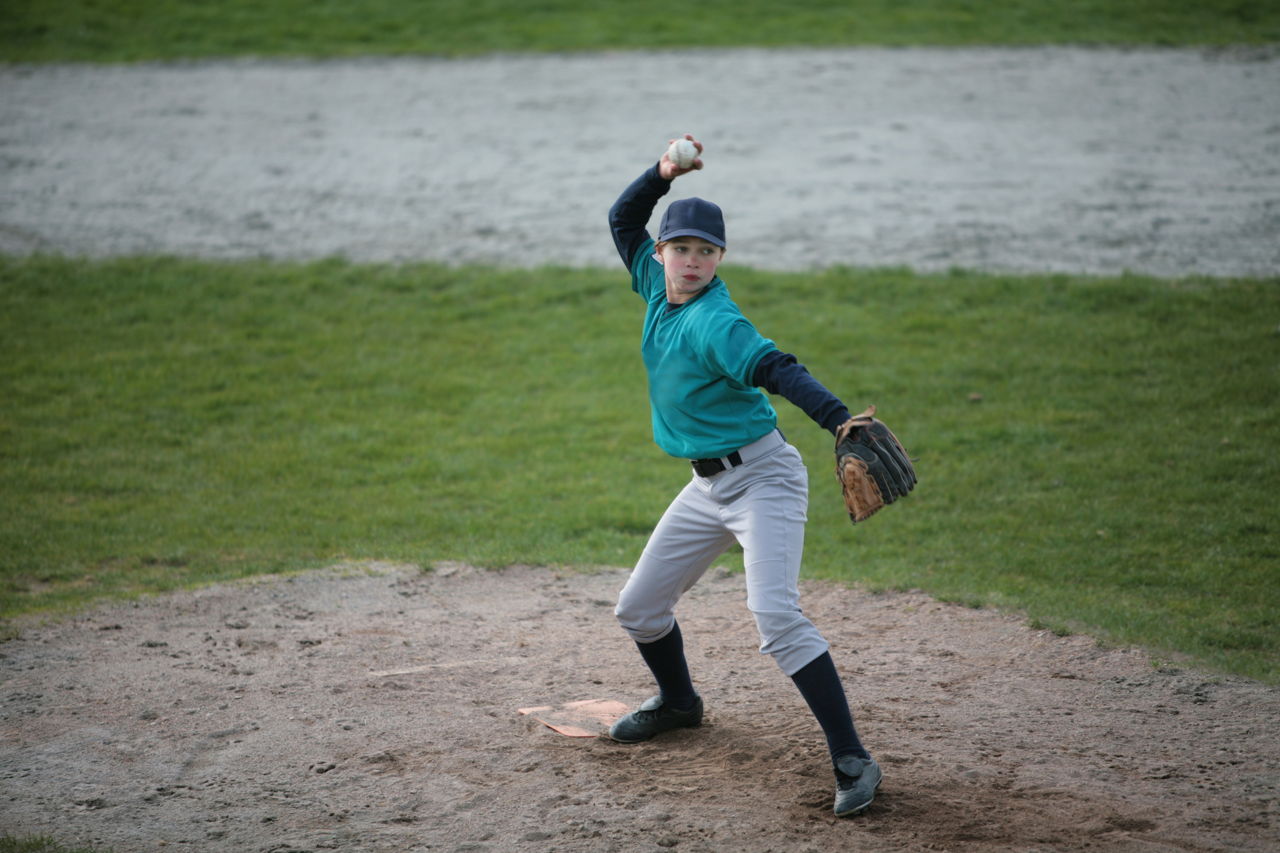
The different rules as far as pitching in softball is concerned are explained in this article. Violations also play an important part; have a look.
Pitching a softball involves throwing the ball towards the batter. The Amateur Softball Association of America (ASA) is the institution which defines the rules and regulations of softball. There are a number of pitching rules specified by the ASA which need to be followed, so as to make a particular delivery count as a legal one.
Correct Pitching
- The starting position of the pitcher should be such that both the feet are on the pitcher’s plate/mound (a rubber plate).
- The ball can be thrown by stepping ahead; any leg can be put forward.
- The ball has to be thrown by means of an underhand action. At the time of release, the hand should be below the pitcher’s hip level. The ball has to be delivered with a straightforward motion.
- When the ball is released from the hand, the wrist should be positioned close to the body. To make it easy to understand, the distance between the wrist and the body should not be greater than the length of a forearm.
- A crafty ball, after being released from the hands of the pitcher, creates an arc while it approaches the batter. For a slow-pitched ball, the arc can be of 6 – 12 feet. In a fast-pitch, there are no such restrictions.
- Putting the hands together after being separated for throwing is banned. It is necessary to complete the throw after the hands are separated.
- The pitcher may rotate the hand before releasing the ball to generate speed. The number of rotations should, however, not be greater than two.
- Any kind of foreign substance, including Vaseline, grease, etc., cannot be applied to the ball for availing undue advantage.
- A raisin bag can be used for drying the hand. However, if the resin sticks to the ball, the delivery is not considered legal.
- At the time when the pitcher delivers the ball, all fielders have to stay in the fair territory. The only exception is that of the catcher. If any of the fielder is out of the fair territory, the ball is considered illegal.
Violations
Understanding what not to do while pitching is equally important as what to do. There are certain moves that are considered illegal in pitching.
Leaping
This is one of the moves which needs to be avoided in softball. The simple definition of leaping is the condition in which both feet of the pitcher are in the air at the same time.
Crow-hopping
In this move, both feet of the pitcher are dragged off the plate. Replanting of one of the feet takes place in order to derive advantage by means of a second push-off. The pitcher gets undue advantage, as this enables him to release the ball at a greater speed with this kind of action. It is also possible to deceive the batter by changing the pace of the ball.
Stepping
The act of side-stepping, just like leaping, is not allowed at the time of pitching the ball. The pitcher, who is about to release the ball, balances his weight in on one foot, and moves the other (which is not grounded) forward. It is necessary to keep the foot well within the plate’s range; the range of the plate is 24 inches. The pitcher is not allowed to step out of this range.






